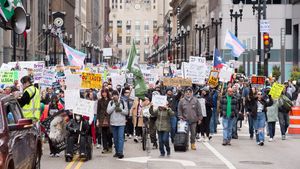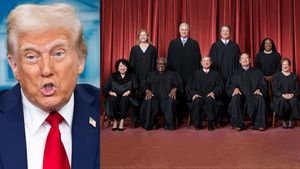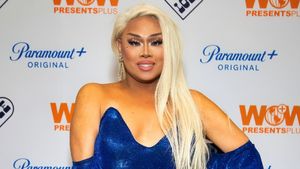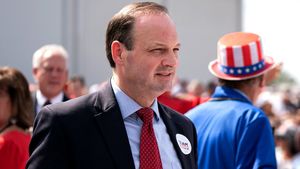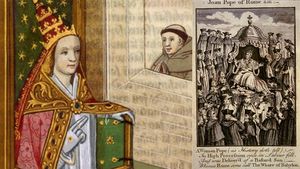As gay and bisexual men were dropping dead in the mid-1980s, political strategists realized they had to make a choice. Acknowledge that the epidemic was disproportionately impacting gay and bisexual men — a despised minority in the U.S. — or reposition the epidemic as a threat to every American.
The political choice was to re-cast the threat of the epidemic. By changing the discussion about HIV from what gay and bisexual men were doing sexually to the risk of “innocent” victims — like Ryan White, Kimberly Bergalis, and others (all of whom were white and heterosexual) — Congress was unable to ignore the crisis anymore. They could no longer paint the epidemic as the result of the exotic lives of gay and bisexual men.
In 1990, the political calculation paid off with Congress passing the Ryan White CARE Act and unleashing a flood of federal dollars to AIDS service organizations, most of them created by and for gay and bisexual men. The de-gaying was complete.
When the right wing claims HIV was a gay disease, gay leaders recoiled in rage. HIV, they said, was everyone’s problem. In a big picture snapshot that is accurate. But in the U.S. it’s a lie. The virus is safely encamped in the bodies of men who have sex with other men (a term of epidemiology coined by scientists, which makes trans women — deeply affected by HIV — invisible in the epidemic).
Author John-Manuel Androite says that in the mid-'80s a national coalition called National Organizations Responding to AIDS (NORA) made a decision — a deliberate decision — that echoes even today in how the U.S. addresses HIV.
“What they did was they framed the discussion about HIV for lawmakers in terms of public health; as a public health crisis, not a gay community crisis per se,” Andriote says. “What they did, very intentionally, was to emphasize the impact of HIV on non-gay people, specifically women and children.”
Androite authored the book Victor Deferred: How AIDS Changed Gay America, which tracks the political impact of the epidemic on the LGBT rights movement.
“Unfortunately, the unexpected impact or effect of that de-gaying strategy was that the federal government was very happy to pay attention and focus resources on women and kids,” he says. “But the attitude was still that gay men could sort of fend for themselves.”
At that point, he says, the national LGBT organizations which participated in the NORA coalition, felt their part in addressing the epidemic was over, and could “move on to issues that affect the rest of us, marriage equality in particular, and that just dominated the political discourse for quite some time. Until today I would say.”
This happened at time when two-thirds of people living with HIV in the U.S. were gay or bisexual men; just as it is today, he points out.
Listen to the full interview with Androite below before you continue to next page:
Despite AIDS having “built” the movement, Androite argues, the movement stopped working on HIV.
“But the organized movement kind of strayed away from the very thing that had built them to use their new resources and clout to push a really different agenda that served the needs of — I would argue — a sliver of the community they purport to represent,” he says. “And they didn’t really do anything helpful for the gay men and bisexual men…of color who are now most impacted by HIV but who also are not big contributors of these organizations.”
Androite argues that his reporting finds that LGBT organizations have surrendered the fight against HIV. He notes that it is no longer on the national agenda. He points to the 2006 controversial publicity move by the LA Gay and Lesbian Community Center to draw attention to the crisis. They put up billboards declaring “HIV is a Gay Disease. Own it.” The backlash from the community was fierce, The Los Angeles Times reported.
Despite the statistical reality that 75 percent of the cases in Los Angeles county at the time were in men who have sex with men, various HIV organizations condemned the campaign as getting in the way of getting various risk groups tested.
“There is a level of ignorance about the impact of the epidemic in our own community,” he says. “I would blame the LGBT organizations for that ignorance. It’s kind of like they don’t have it on their agenda: Why? It affects their constituency. But then the question is who is their constituency? Or who do they think their constituency is? Is it only the white gay people with disposable incomes who donate to them, or is it the actual community in all its diversity?”
As a result of far-right assaults on gays as involved in “exotic” sexual options, such as fisting or S/M, a framing developed in national LGBT organizing which de-sexualized gay and bisexual men, and focused instead on the idea that gay people were just like everyone else. That, in turn, Androite argues, underpinned the marriage equality movement and allowed the LGBT movement to continue to turn a blind eye to the growing epidemic.
The fact is, however, studies still show that men who have sex with men have significantly higher probabilities of getting infected with HIV: and the monogamy message is failing. The Office Of National AIDS Policy’s Greg Millett reported at the National Gay and Lesbian Task Force Creating Change conference in 2013 that 68 percent of new infections among gay and bi men were happening in the context of primary sexual relationships. A newly released study has found that this may be happening because of a confluence of issues: higher infection rates to begin with, sexual social networks, quantity of sex, lack of testing and access to care, and a higher infectiousness in early infection. There is even some evidence that HIV (Subtype B) prevalent in the U.S. is specifically targeting cells in the anus, making a possible heterosexual epidemic in this country unlikely.
But the HIV epidemic is slowly re-entering the national dialog about LGBT equality. The NGLTF Creating Change Conference in 2014 featured a plenary session on HIV, the first in as many years as some can recall. And NGLTF Executive Director Rea Carey has called for the community to finally address the epidemic. Now the question is, will other leaders join her directive and make HIV "our" issue again?
























